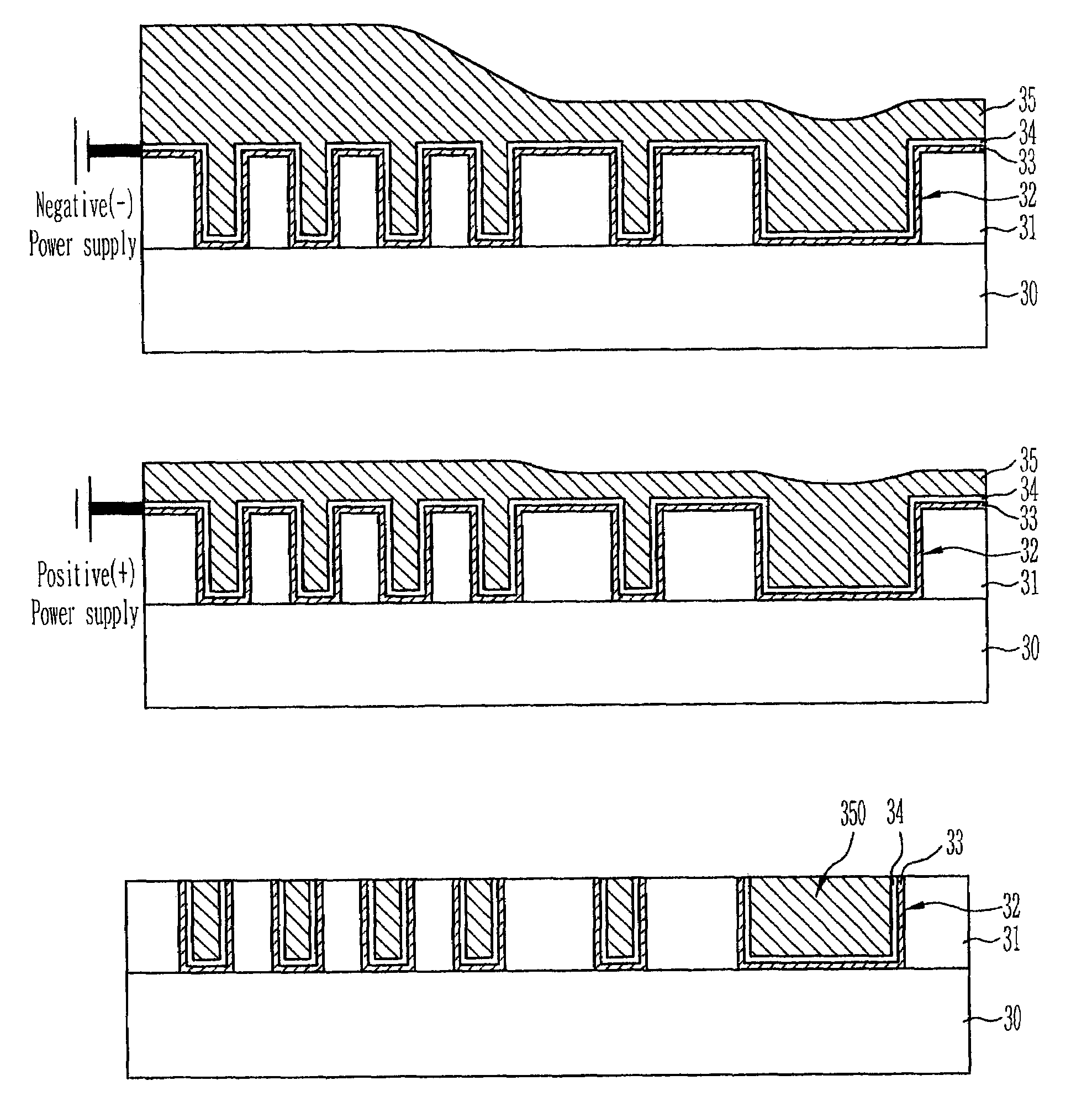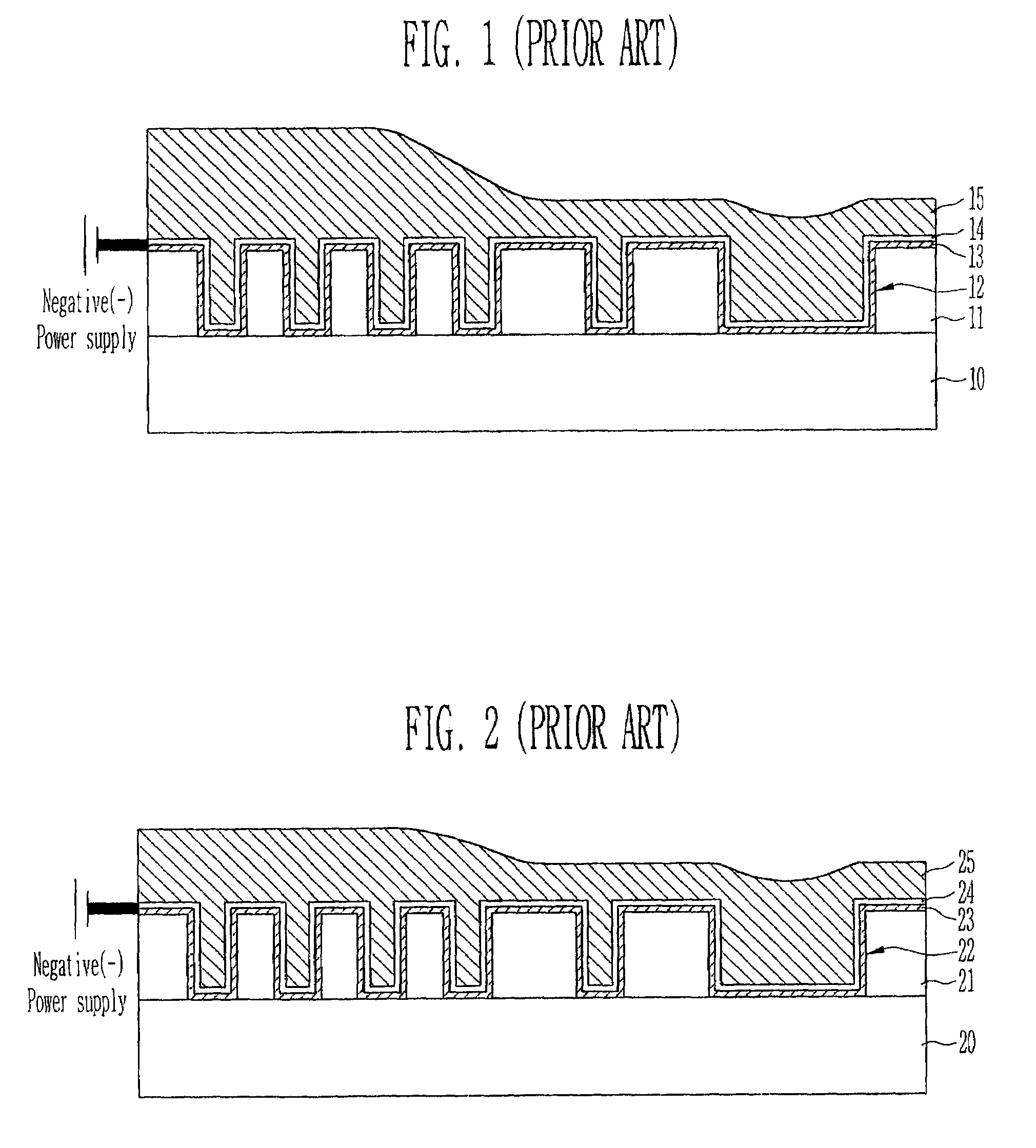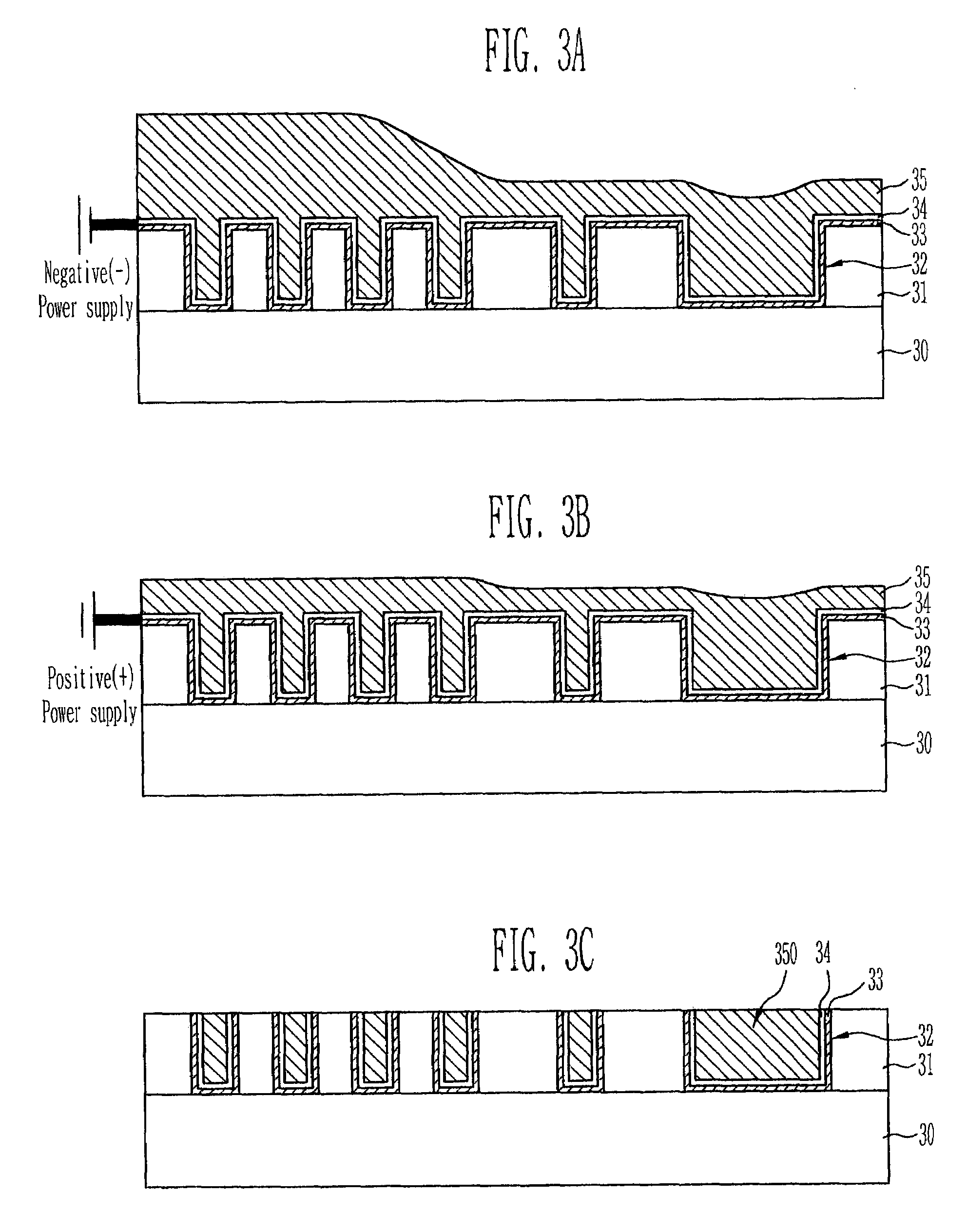Method of forming copper wiring in a semiconductor device
a technology of semiconductor devices and copper wires, applied in the direction of semiconductor devices, basic electric elements, electrical apparatus, etc., can solve the problems of degrading physical characteristics such as electrical characteristics, degrading the signal transfer rate of thin copper films, etc., and achieve the effect of improving the electrical characteristics and reliability of the devices
- Summary
- Abstract
- Description
- Claims
- Application Information
AI Technical Summary
Benefits of technology
Problems solved by technology
Method used
Image
Examples
Embodiment Construction
[0025]Reference will now be made in detail to the preferred embodiments of, examples of which are illustrated in the accompanying drawings.
[0026]FIG. 3A through FIG. 3C are cross-sectional views of semiconductor devices for explaining a method of forming copper wirings in the device using an electroplating method according to a preferred embodiment.
[0027]Referring now to FIG. 3A, an interlayer insulating film 31 is formed on a substrate 30. A plurality of damascene patterns 32 having different densities are then formed in the interlayer insulating film 31 by means of a damascene scheme. Next, a copper barrier metal layer 33 and a copper seed layer 34 are sequentially formed along the surface of the interlayer insulating film 31 including the plurality of the damascene patterns 32. Thereafter, a copper layer 35 is formed by means of a copper electroplating method so that the plurality of the damascene patterns 32 in which the copper seed layer 34 is formed are sufficiently filled.
[00...
PUM
| Property | Measurement | Unit |
|---|---|---|
| current | aaaaa | aaaaa |
| electrical resistance | aaaaa | aaaaa |
| circuit density | aaaaa | aaaaa |
Abstract
Description
Claims
Application Information
 Login to View More
Login to View More - R&D
- Intellectual Property
- Life Sciences
- Materials
- Tech Scout
- Unparalleled Data Quality
- Higher Quality Content
- 60% Fewer Hallucinations
Browse by: Latest US Patents, China's latest patents, Technical Efficacy Thesaurus, Application Domain, Technology Topic, Popular Technical Reports.
© 2025 PatSnap. All rights reserved.Legal|Privacy policy|Modern Slavery Act Transparency Statement|Sitemap|About US| Contact US: help@patsnap.com



